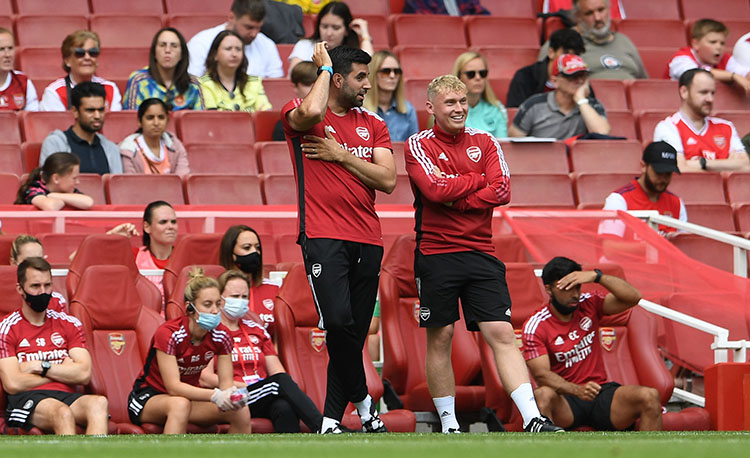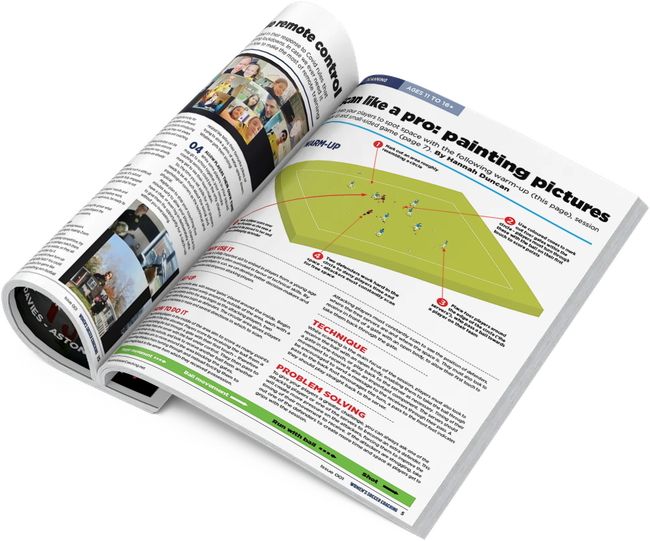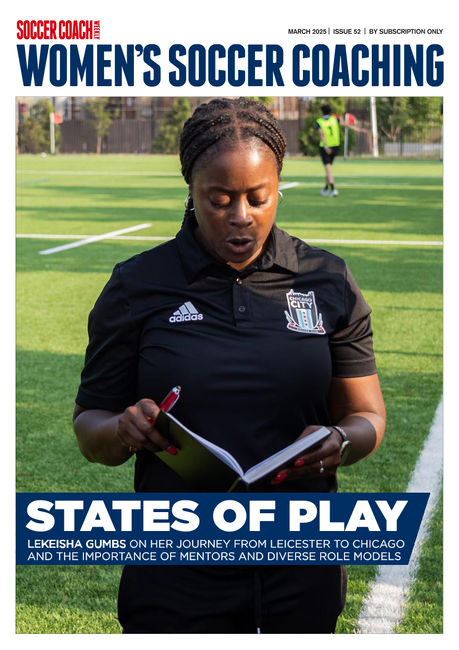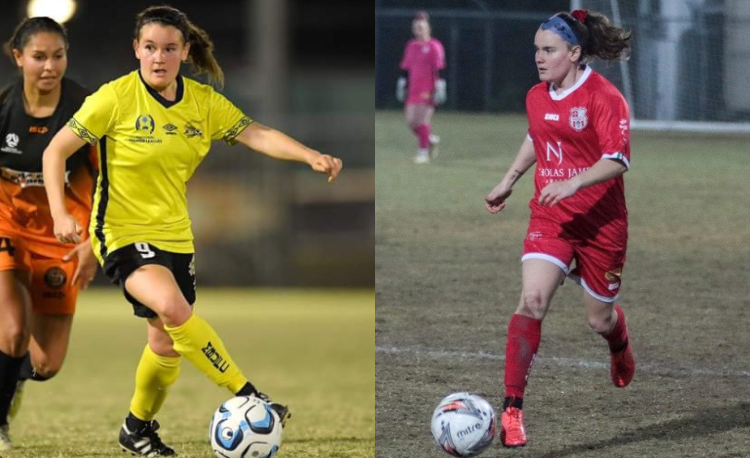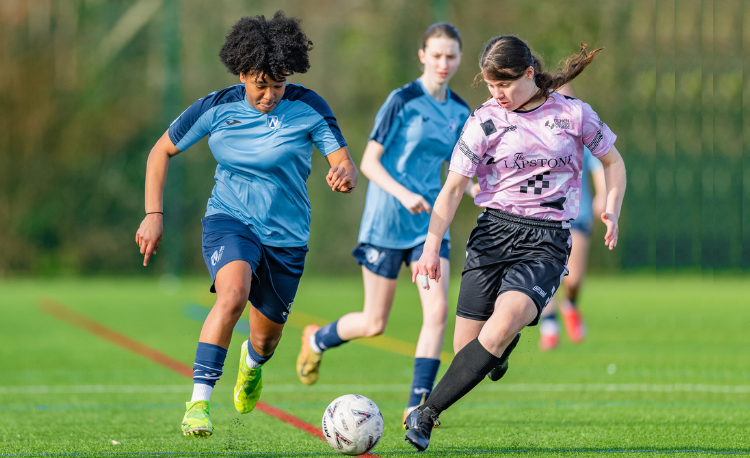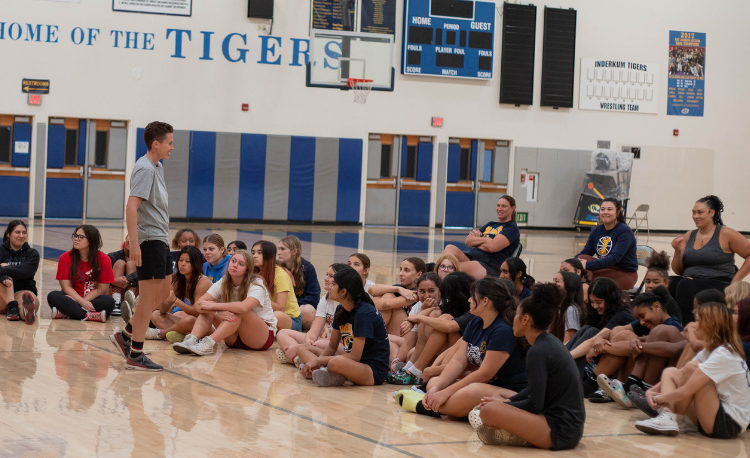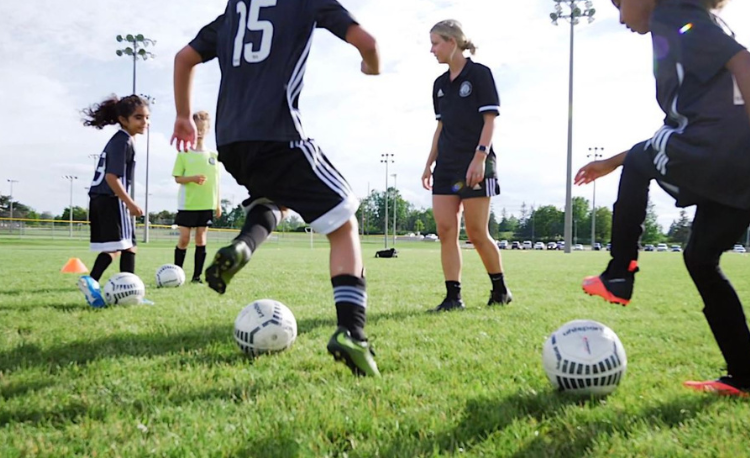You are viewing
1 of your 3 free articles
Establishing a player-centred environment
Coaching Adviceby James Honeyman
Arsenal Women's academy manager James Honeyman on the importance of a coherent and cohesive philosophy - and lifting it off the page and into reality
Person first, player second - sounds logical, doesn’t it?
But would we see this if we broke down every aspect of our practices, environments, and development pathways? Or even more so, would we still see a person-first culture in the highest pressure moments of sport?
Over my time coaching at the elite end of the game, I have read and written many philosophies or principles which look incredibly glamorous in laminated form, covered in club branding. They have been plastered over walls like artwork with key words in bold, to stress their importance.
And then I see and feel the environment, and keep a tally chart of how many times I see the philosophy or principles in action. It is often zero.
I will check in with staff and ask what the philosophy is and what it means. Often they know these - which is positive - but then I ask how it relates to what they are doing right now. That is where the link in the chain breaks.
Put simply, I ask coaches, players and sports leaders: ‘Are we who we say we are when nobody is watching?’.
Around four years ago, I took a deep dive into the environments I was leading.
Although we were mentioning developing the person repeatedly, we were not doing it. We were not creating the environment I was claiming we were.
On reflection, we were perhaps hoping that if we delivered good technical and tactical information to the players, they would magically become better people, and that the players who 'made it' would be the proof this was working.
From that point, my lens for success became less ego driven, and more individualised and personal.
We started putting the player at the centre of everything we do, while empowering them to take responsibility for their own personal development.
This environment should be individualised and fear-free, developing people for the future game, and future life. This is how I define a player-centred environment.
If we get our session design right and the learning environment correct, then we can give people the ownership to become a better version of themselves.
Whether they become a teacher, scientist, doctor, lawyer or footballer, the skills we can help them to gain can benefit them, whatever their career path.
Five key components to developing a player-centred approach are:
Whatever environment you create, it must be felt in every single facet of the club.
Technical session design must allow for fast thinking and decision-making. We must push players out of their comfort zone but still be there to support and ensure they know there is nothing to fear from ‘failure’.
In the medical department, players must complete their wellness questionnaires and give honest answers. The environment must take away the anxiety around discussing sensitive issues like the menstrual cycle and allow for honest and open discussion.
In the gym, players will be given the opportunity to choose what they want to focus on. We will support with the programme creation, but they will monitor their weight and push themselves accordingly.
Extra training and support is available outside of the set times, but the players must request this.
Off the pitch, review and individual development plan (IDP) processes should be completed by the player, and they should lead the conversations. They will grade their progress as well as setting their own targets.
Players can create playlists and send clips to coaches at any time for review and discussion. Access to support staff, both performance and psychological, is always available.
The players know they have complete ownership over every aspect of their development and it will be as bespoke as possible. This means the player has a high level of accountability.
This will unearth gems of intelligence we might never have found out.
Simple ways of doing this include an ‘about me’ chat at the start of the season, or an IDP target review which the player leads. This will immediately tell you their communication styles and skills, and even some education intel.
By asking schools for exam schedules, we can learn hot spots and help us to better understand why a player’s focus might drop at certain times.
We can learn about other sports they do and the loading we need to consider to stop overuse injuries. We can also find out how long they have been gym training for - or maybe this is their first time?
We may additionally learn about family challenges. Think how differently we would treat every individual if we knew their story.
We must become three different characters: the supporter, the enabler and the initiator.
The supporter aids the growth of the person by helping them to learn how to self- reflect and own their development, and by disrupting their thinking. Off the pitch, this support might be general wellness check-ins.
The enabler is someone who makes something possible, while the initiator is the ‘joiner of the dots’ - the link between all the conversations, with schools, support networks, other coaches, physical staff, medical staff, or other players.
I hear the term ‘upskilling the whole support network’ often, but I believe this to be near impossible.
With some players playing for two club teams, county, international, two age groups, school team and then any other sports, there could be as many as 2,000 people in the support network.
Our time would be better spent developing the young person to communicate with their support network and explain the challenges they face.
We can, however, include the key members of this network in decision-making and discussions. By doing this, we can understand how it feels from every position (parent, player, staff), and explain rationale for our decisions.
By creating these connections, we can all work together for the good of the young person. We can create consistent messaging and be able to have honest conversations – something that can become vitally important when it becomes time for registration or deregistration processes.
If we want to give in-depth feedback, we must be willing to take feedback.
One of the most powerful tools I made for myself was creating a post-session feedback form for players to complete. The feedback was so powerful in shaping my coaching: ‘you talk too fast’, ‘you say my name wrong’, ‘I wish we had more game time’.
Regular feedback is vital - this can be face- to-face or anonymously on a questionnaire. By listening, we understand how every person involved feels and how we can improve our environment to help everyone. Although this might be a large culture shift for some environments, it is important to note that some of these changes are as simple as a conversation framed differently, a questionnaire sent to parents three times a year, or one extra one-to-one meeting in pre-season.
Ultimately, we hold the keys to each young person’s development, and it is vital we do that in a holistic way 100% of the time.
But I ask again: are we who we say we are when nobody is watching?
But would we see this if we broke down every aspect of our practices, environments, and development pathways? Or even more so, would we still see a person-first culture in the highest pressure moments of sport?
Over my time coaching at the elite end of the game, I have read and written many philosophies or principles which look incredibly glamorous in laminated form, covered in club branding. They have been plastered over walls like artwork with key words in bold, to stress their importance.
And then I see and feel the environment, and keep a tally chart of how many times I see the philosophy or principles in action. It is often zero.
I will check in with staff and ask what the philosophy is and what it means. Often they know these - which is positive - but then I ask how it relates to what they are doing right now. That is where the link in the chain breaks.
Put simply, I ask coaches, players and sports leaders: ‘Are we who we say we are when nobody is watching?’.
Around four years ago, I took a deep dive into the environments I was leading.
Although we were mentioning developing the person repeatedly, we were not doing it. We were not creating the environment I was claiming we were.
On reflection, we were perhaps hoping that if we delivered good technical and tactical information to the players, they would magically become better people, and that the players who 'made it' would be the proof this was working.
From that point, my lens for success became less ego driven, and more individualised and personal.
We started putting the player at the centre of everything we do, while empowering them to take responsibility for their own personal development.
This environment should be individualised and fear-free, developing people for the future game, and future life. This is how I define a player-centred environment.
If we get our session design right and the learning environment correct, then we can give people the ownership to become a better version of themselves.
"I ask coaches: 'Are we who we say we are when nobody is watching?'..."This will add tools to their toolbox to help them become confident, reflective and brave women in the future, willing to be unique and ask difficult questions.
Whether they become a teacher, scientist, doctor, lawyer or footballer, the skills we can help them to gain can benefit them, whatever their career path.
Five key components to developing a player-centred approach are:
Create the environment
Whatever environment you create, it must be felt in every single facet of the club.
Technical session design must allow for fast thinking and decision-making. We must push players out of their comfort zone but still be there to support and ensure they know there is nothing to fear from ‘failure’.
In the medical department, players must complete their wellness questionnaires and give honest answers. The environment must take away the anxiety around discussing sensitive issues like the menstrual cycle and allow for honest and open discussion.
In the gym, players will be given the opportunity to choose what they want to focus on. We will support with the programme creation, but they will monitor their weight and push themselves accordingly.
Extra training and support is available outside of the set times, but the players must request this.
Off the pitch, review and individual development plan (IDP) processes should be completed by the player, and they should lead the conversations. They will grade their progress as well as setting their own targets.
Players can create playlists and send clips to coaches at any time for review and discussion. Access to support staff, both performance and psychological, is always available.
The players know they have complete ownership over every aspect of their development and it will be as bespoke as possible. This means the player has a high level of accountability.
Learning about the person
This will unearth gems of intelligence we might never have found out.
Simple ways of doing this include an ‘about me’ chat at the start of the season, or an IDP target review which the player leads. This will immediately tell you their communication styles and skills, and even some education intel.
By asking schools for exam schedules, we can learn hot spots and help us to better understand why a player’s focus might drop at certain times.
We can learn about other sports they do and the loading we need to consider to stop overuse injuries. We can also find out how long they have been gym training for - or maybe this is their first time?
We may additionally learn about family challenges. Think how differently we would treat every individual if we knew their story.
Support the person
We must become three different characters: the supporter, the enabler and the initiator.
The supporter aids the growth of the person by helping them to learn how to self- reflect and own their development, and by disrupting their thinking. Off the pitch, this support might be general wellness check-ins.
The enabler is someone who makes something possible, while the initiator is the ‘joiner of the dots’ - the link between all the conversations, with schools, support networks, other coaches, physical staff, medical staff, or other players.
Developing the network
I hear the term ‘upskilling the whole support network’ often, but I believe this to be near impossible.
With some players playing for two club teams, county, international, two age groups, school team and then any other sports, there could be as many as 2,000 people in the support network.
Our time would be better spent developing the young person to communicate with their support network and explain the challenges they face.
We can, however, include the key members of this network in decision-making and discussions. By doing this, we can understand how it feels from every position (parent, player, staff), and explain rationale for our decisions.
"We must become three characters: the supporter, the enabler and the initiator..."The parent can, in turn, be involved in the young person’s development by understanding the IDP process, review process, game plans etc.
By creating these connections, we can all work together for the good of the young person. We can create consistent messaging and be able to have honest conversations – something that can become vitally important when it becomes time for registration or deregistration processes.
Feedback loops
If we want to give in-depth feedback, we must be willing to take feedback.
One of the most powerful tools I made for myself was creating a post-session feedback form for players to complete. The feedback was so powerful in shaping my coaching: ‘you talk too fast’, ‘you say my name wrong’, ‘I wish we had more game time’.
Regular feedback is vital - this can be face- to-face or anonymously on a questionnaire. By listening, we understand how every person involved feels and how we can improve our environment to help everyone. Although this might be a large culture shift for some environments, it is important to note that some of these changes are as simple as a conversation framed differently, a questionnaire sent to parents three times a year, or one extra one-to-one meeting in pre-season.
Ultimately, we hold the keys to each young person’s development, and it is vital we do that in a holistic way 100% of the time.
But I ask again: are we who we say we are when nobody is watching?
Related Files
WSC-015-establishing-a-player-centred-environment.pdfPDF, 584 KB
Newsletter Sign Up
Newsletter Sign Up
Discover the simple way to become a more effective, more successful soccer coach
In a recent survey 89% of subscribers said Women's Soccer Coaching makes them more confident, 91% said Women's Soccer Coaching makes them a more effective coach and 93% said Women's Soccer Coaching makes them more inspired.
*includes 3 coaching manuals
Get Inspired
All the latest techniques and approaches
Women's Soccer Coaching offers proven and easy to use soccer drills, coaching sessions, practice plans, small-sided games, warm-ups, training tips and advice.
We've been at the cutting edge of soccer coaching since we launched Soccer Coach Weekly in 2007, creating resources for the grassroots youth coach, following best practice from around the world and insights from the professional game.
